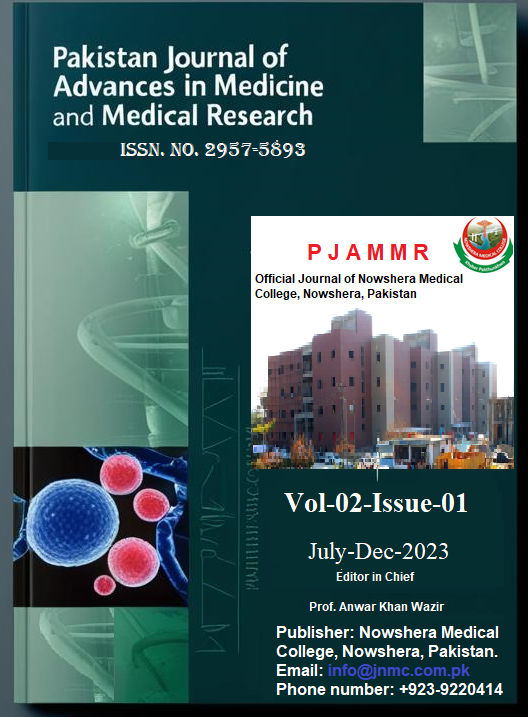Changes in Blood Vessel Morphology in Erythematous Skin of Atopic Dermatitis Patients
Original Article
DOI:
https://doi.org/10.69837/pjammr.v2i01.32Keywords:
AMD, Vasculature, Redness of the Skin, Swelling.Abstract
Background: Atopic dermatitis (AD) is a common inflammatory skin disorder causing erythematous lesions and abnormalities in microvascular structure. The cross-sectional study was done from January 05 to July 05, 2019, and it was carried out at Watim Medical and Dental College, Rawat, to ascertain whether the mean age, standard deviation, and p-value were significant.
Objectives: to examine the morphology of the blood vessels in the erythematous skin and the age of patients with atopic dermatitis, which may significantly differ from that of healthy individuals.
Study design: A cross-sectional study.
Place and duration of study. Department of pathology Watim medical and dental college, Rawat Pakistan From 05-Jan 2019 To 05-Jan 2020
Methods: The sample of this cross-sectional study was obtained from the Department of Pathology Watim Medical and Dental College, Rawat l, starting on January 05- 2019 and up to 05- July 2019. As the total number, we have 100 patients who were diagnosed with atopic dermatitis (AD). The age of each patient was also uploaded. The morphology of veins in erythema eruptions was investigated using dermoscopy. Unlike my previous research, I used statistical analysis to discover the mean age and standard deviation. A p-value was calculated to assess the level of the discovered alterations in blood vessel morphology. Data analysis happened through statistical software, which meant that the accuracy and reliability would be in the research findings. Before the study could begin, the university ethics committee approved it.
Results: The study involved 100 patients with atopic dermatitis who attended Watim Medical and Dental College, Rawat, aged between 18 and 65 years (mean age 35. 4, SD 12. 7) and is shown in (Table 1). The analysis of the blood vessel morphology in the erythematous skin of the patients revealed that two-thirds (60%) of them had altered morphology. In comparison, one-third (40%) of the patients had normal morphology (Table 2). The statistical analysis identified a significant difference between the normal and the distorted vascular architecture with a p-value of 0. 045 (Table. 4). The study's ranking of the high incidence of vascular changes in atopic dermatitis lesions emphasizes the possible correlation between blood vessel transformations and the outcome of skin condition rashes (see Table 5).
Conclusion: The present study stresses important vasculature modifications in atopic dermatitis and consequently sheds light on their key role in the development of disease pathophysiology. Potential future targeted therapies on these vascular alterations might be more effective than therapy with just improvement in clinical results.
Keywords: Atopic Dermatitis, Vascular Morphology, Erythematous Skin, Inflammation.
Downloads
Published
How to Cite
Issue
Section
License
Copyright (c) 2024 Sara Manan, Momina khadija Abbasi, Adil Ayub

This work is licensed under a Creative Commons Attribution-NonCommercial 4.0 International License.






